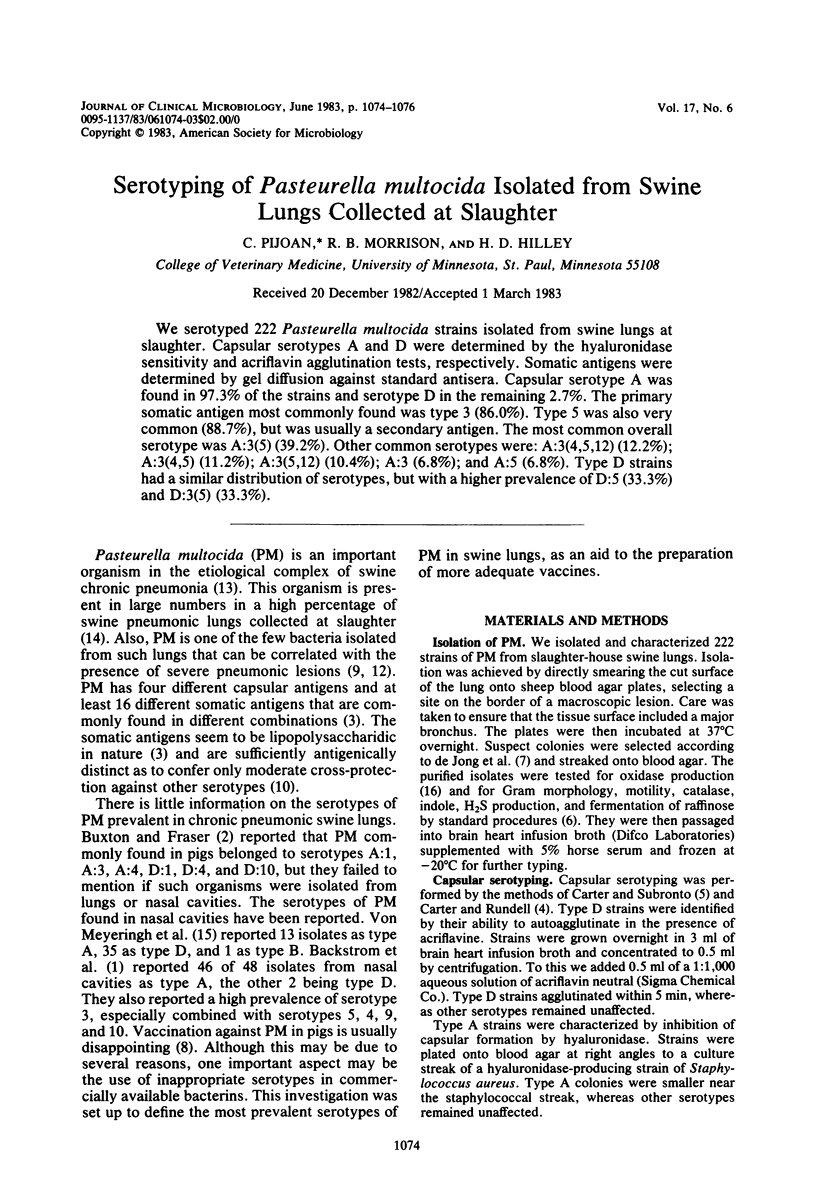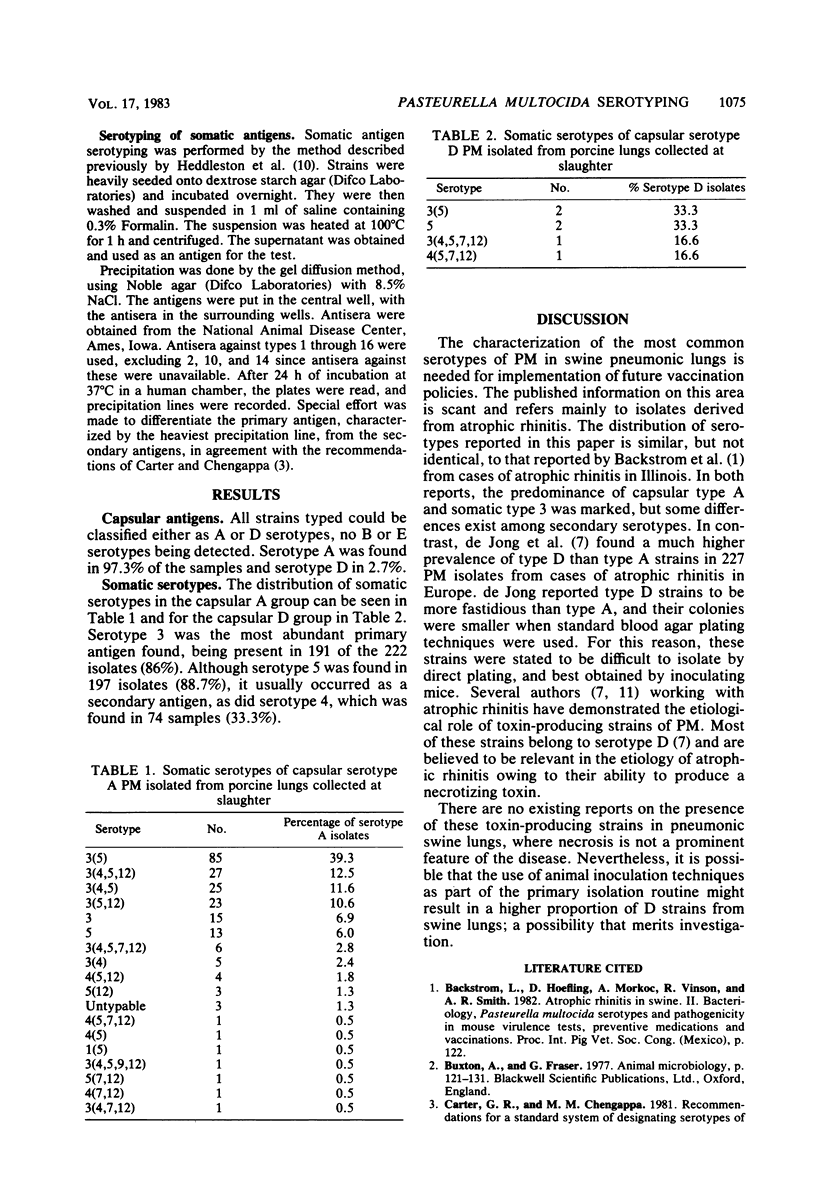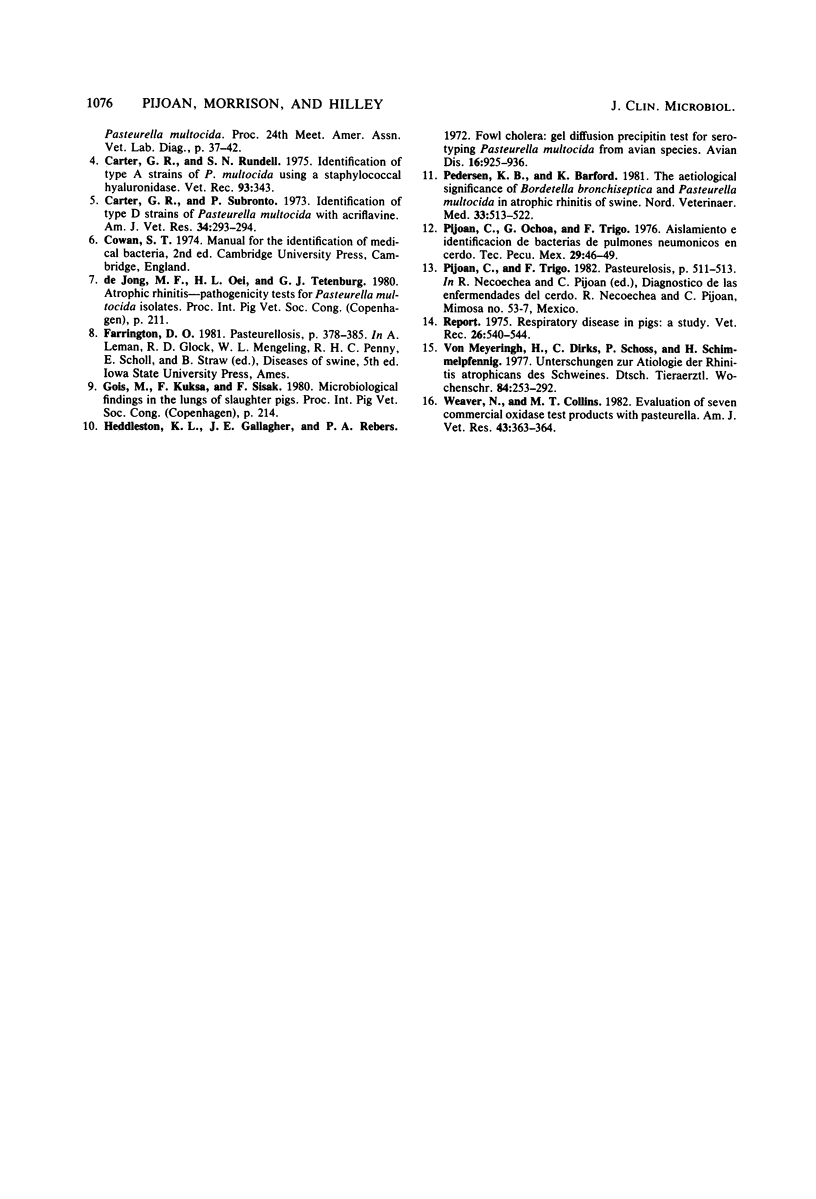Abstract
We serotyped 222 Pasteurella multocida strains isolated from swine lungs at slaughter. Capsular serotypes A and D were determined by the hyaluronidase sensitivity and acriflavin agglutination tests, respectively. Somatic antigens were determined by gel diffusion against standard antisera. Capsular serotype A was found in 97.3% of the strains and serotype D in the remaining 2.7%. The primary somatic antigen most commonly found was type 3 (86.0%). Type 5 was also very common (88.7%), but was usually a secondary antigen. The most common overall serotype was A:3(5) (39.2%). Other common serotypes were: A:3(4,5,12) (12.2%); A:3(4,5) (11.2%); A:3(5,12) (10.4%); A:3 (6.8%); and A:5 (6.8%). Type D strains had a similar distribution of serotypes, but with a higher prevalence of D:5 (33.3%) and D:3(5) (33.3%).
Full text
PDF


Selected References
These references are in PubMed. This may not be the complete list of references from this article.
- Carter G. R., Rundell S. W. Identification of type A strains of P multocida using staphylococcal hyaluronidase. Vet Rec. 1975 Apr 12;96(15):343–343. doi: 10.1136/vr.96.15.343. [DOI] [PubMed] [Google Scholar]
- Carter G. R., Subronto P. Identification of type D strains of Pasteurella multocida with acriflavine. Am J Vet Res. 1973 Feb;34(2):293–294. [PubMed] [Google Scholar]
- Pedersen K. B., Barfod K. The aetiological significance of Bordetella bronchiseptica and Pasteurella multocida in atrophic rhinitis of swine. Nord Vet Med. 1981 Dec;33(12):513–522. [PubMed] [Google Scholar]
- Weaver N., Collins M. T. Evaluation of seven commercial oxidase test products with Pasteurella. Am J Vet Res. 1982 Feb;43(2):363–364. [PubMed] [Google Scholar]


